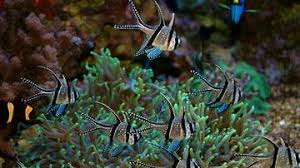Dragons in Chinese Spring Festivals: Customs and Traditions

The dragon holds a central place in Chinese culture, symbolizing strength, prosperity, good fortune, and protection. It is a creature that represents the harmony between humans and nature, embodying both mythical and natural forces. Among the numerous traditions and celebrations where the dragon takes center stage, none is more prominent than its role in the Chinese Spring Festival, commonly known as the Chinese New Year. This festival, which marks the beginning of the lunar calendar, is the most important holiday in Chinese culture, filled with rituals, symbolism, and festivities. The dragon, with its deep roots in Chinese mythology, plays a significant part in the Spring Festival celebrations, particularly through dragon dances, decorations, and the various customs that bring good fortune to people’s lives.
In this article, we will explore the role of the dragon in Chinese Spring Festival, focusing on the customs and traditions that surround its presence. We will look at the history of dragon symbolism, the specific customs involving the dragon during the festival, and the meaning behind dragon-related performances. Additionally, we will examine how the dragon serves as a symbol of protection, wealth, and harmony, connecting the community to the spiritual world and the forces of nature.
1. The Symbolism of the Dragon in Chinese Culture
The dragon is one of the most enduring and prominent symbols in Chinese culture, deeply embedded in the country’s mythology, philosophy, and art. It represents a wide range of positive attributes, including power, good luck, wisdom, and strength. In Chinese cosmology, the dragon is often associated with Yang energy, the active, dynamic force in the universe, in contrast to the Yin energy, which represents passivity and stillness. The dragon is believed to have the ability to control the elements of nature, such as water, rain, and wind, which are crucial for agricultural prosperity.
The dragon is also closely linked with the emperor, representing imperial authority and the divine right to rule. The emperor was often referred to as the “Son of Heaven” and was said to be chosen by the heavens to rule the land, with the dragon as his protector and symbol of his celestial power. This connection between the dragon and the emperor underscores the sacred and powerful nature of the dragon in Chinese culture.
2. The Dragon and the Spring Festival: A Cultural Connection
The Chinese New Year, or the Spring Festival, is the most significant festival in China. It marks the arrival of the lunar new year and is celebrated with an array of customs, rituals, and festivities that honor ancestors, promote family unity, and ensure prosperity in the year ahead. The festival, which typically lasts for about two weeks, is a time of joy, renewal, and respect for tradition.
The dragon, with its symbolic ties to power, good fortune, and protection, plays an important role in these celebrations. The dragon dance, in particular, is one of the most iconic features of the Spring Festival. The dragon is thought to bring good luck, wealth, and harmony to the community, and its presence during the festival helps drive away evil spirits while ensuring a prosperous year ahead.
3. The Dragon Dance: A Central Tradition of the Spring Festival
One of the most recognized and celebrated traditions during the Spring Festival is the Dragon Dance. The dance, which is performed during parades and festivities, is a vibrant and dynamic display of the dragon’s power and majesty. The dance involves a long, colorful dragon puppet, often several meters long, carried by a team of dancers who control the dragon’s movements. The dragon puppet is usually made of silk, cloth, and bamboo and is decorated with vibrant colors, intricate patterns, and shimmering scales. The dragon is typically supported by a group of dancers who hold poles and work together to make the dragon dance, sway, and undulate as it moves through the streets.
The Dragon Dance is often accompanied by the loud beating of drums, gongs, and the ringing of cymbals, creating an exciting and energetic atmosphere that fills the streets with sound and motion. This energetic performance is intended to chase away evil spirits and bring good fortune to the community. The loud noises and fast movements are believed to scare away any negative energy and cleanse the area of bad luck, paving the way for a prosperous and peaceful year.
There are several variations of the Dragon Dance across China, with regional styles differing in terms of the size of the dragon, the way it is danced, and the accompanying music. In some regions, the dragon dance is performed as part of a larger lion dance performance, with both dances symbolizing prosperity and good fortune.
4. Dragon Decorations and Symbols in Spring Festival Celebrations
In addition to the dragon dance, the dragon is also a key feature of the decorations that adorn homes, streets, and public spaces during the Spring Festival. Dragon imagery is widely used in the design of lanterns, banners, and wall hangings, often paired with other auspicious symbols, such as phoenixes, peaches, and bamboo. These symbols are meant to attract wealth, good health, longevity, and prosperity in the coming year.
Homes and businesses are often decorated with dragon-themed items, including door decorations, red envelopes (containing money to wish others good fortune), and spring couplets (poetic messages written on red paper). The color red is of particular significance during the Spring Festival, as it is believed to symbolize good luck and happiness, while the dragon adds an extra layer of symbolic meaning, connecting the community to the cosmic forces of the universe.
The dragon’s presence in these decorations is also a sign of respect for the emperor, as dragons were traditionally reserved for use in imperial palaces and the attire of the emperor. By using dragon motifs in the decorations of their homes and businesses, people are invoking the emperor’s divine protection and inviting good fortune into their lives.
5. The Dragon’s Role in Religious and Ceremonial Practices
Beyond the dragon dance and decorations, the dragon also plays a role in religious and ceremonial practices during the Spring Festival. For many Chinese people, the holiday is a time to pay homage to their ancestors and to seek divine favor for the year ahead. Temples and shrines dedicated to deities, spirits, and ancestors are often visited, and offerings are made to invite prosperity, health, and happiness.
During these ceremonies, dragon images may be displayed to honor the spirits and ancestors, as well as to seek divine blessings. In some temples, the dragon is considered a guardian deity, providing protection and guidance. Its presence in religious rituals highlights the dragon’s role as a link between the earthly and divine realms, ensuring that the year ahead will be filled with peace and good fortune.
In some regions of China, dragon boats are also part of the Spring Festival celebrations. These boats, which are decorated with dragon heads and tails, are used in rituals and ceremonies that involve water. The dragon boat is believed to carry the spirit of the dragon into the waters, bringing blessings and protection to the people.
6. The Dragon and the Chinese Zodiac
The Chinese zodiac is another aspect of the Spring Festival that connects with the dragon. In Chinese astrology, each year is associated with one of the twelve animals of the zodiac, including the dragon. The Year of the Dragon is considered particularly auspicious, as it is believed that those born in this year will possess qualities such as strength, intelligence, and leadership. People born in the Year of the Dragon are often seen as charismatic, successful, and lucky.
During the Year of the Dragon, special celebrations are held, and the dragon takes on an even greater significance in the rituals and customs of the Spring Festival. It is believed that the presence of the dragon in the zodiac brings extra blessings and good fortune to everyone.
7. Conclusion
The dragon is an integral part of the Chinese Spring Festival, symbolizing power, good fortune, and protection. From the dragon dance and decorations to religious rituals and the connection to the Chinese zodiac, the dragon plays a vital role in ensuring prosperity, health, and harmony in the coming year. Through these customs and traditions, the dragon serves as a spiritual guide, helping to usher in a new year filled with blessings and good fortune for the Chinese people.
As one of the most revered symbols in Chinese culture, the dragon continues to bring joy, excitement, and a sense of connection to the divine during the Spring Festival, reminding everyone of the power of tradition and the ongoing influence of the mythical creature in modern celebrations.

